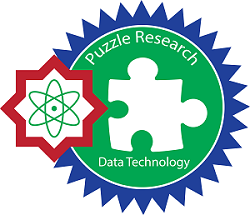Exoplanet Classification Through Machine Learning: A Comparative Analysis of Algorithms Using Kepler Data
DOI:
https://doi.org/10.57152/malcom.v4i3.1303Keywords:
Comparative Analysis, Exoplanet Classification, Kepler Data, Machine Learning, ML AlgorithmsAbstract
This study delves into the classification of exoplanets using data from the Kepler Space Telescope, comparing a suite of machine learning (ML) models to ascertain their efficacy in distinguishing confirmed planets, candidates, and false positives. With a dataset meticulously preprocessed for quality, completeness, and relevance, we embarked on an analytical journey employing models like Decision Tree, Random Forest, Hist Gradient Boosting, CatBoost, AdaBoost, LightGBM, XGBoost, Extra Trees, Logistic Regression, and XGBoost RF. These models underwent rigorous evaluation across metrics such as Accuracy, Precision, Recall, and F1 Score, revealing an unprecedented level of performance. Our findings showcased a near-uniform perfection in model predictions, with scores touching the zenith of 1.0 across most metrics for the majority of models, indicating their flawless prediction capabilities. This remarkable performance, however, was nuanced by the Gaussian NB model's slightly less than perfect scores of 0.99, highlighting a minor deviation due to its probabilistic nature. While these results underscore the models' exceptional accuracy and reliability in classifying exoplanetary data, they also prompt a critical examination of potential overfitting, the dataset's complexity, and the models' generalizability to unseen data.
Downloads
References
X. Fan, Consciousness, Life and the Universe. Taylor & Francis, 2024.
A. A. Sweet, C. F. Sweet, and F. Jaensch, THE UNITY OF TRUTH. Xlibris Corporation, 2024.
A. Loeb, Extraterrestrial: The first sign of intelligent life beyond earth. Houghton Mifflin, 2021.
J. Bennett, S. Shostak, N. Schneider, and M. MacGregor, Life in the Universe. Princeton University Press, 2022.
C. Impey, “Life beyond Earth: How will it first be detected?,” Acta Astronaut., vol. 197, pp. 387–398, 2022.
C. Impey, Worlds Without End: Exoplanets, Habitability, and the Future of Humanity. MIT Press, 2023.
I. Vavilova, L. Pakuliak, I. Babyk, A. Elyiv, D. Dobrycheva, and O. Melnyk, “Surveys, catalogues, databases, and archives of astronomical data,” in Knowledge Discovery in Big Data from Astronomy and Earth Observation, Elsevier, 2020, pp. 57–102.
S. Sen, S. Agarwal, P. Chakraborty, and K. P. Singh, “Astronomical big data processing using machine learning: A comprehensive review,” Exp. Astron., vol. 53, no. 1, pp. 1–43, 2022.
S. Baxter, “The Visibility of Big History,” in Expanding Worldviews: Astrobiology, Big History and Cosmic Perspectives, Springer, 2021, pp. 91–106.
J. N. Winn, The Little Book of Exoplanets. Princeton University Press, 2023.
M. J. Smith, “Using deep learning to explore ultra-large scale astronomical datasets,” 2022.
S. Abimannan, E.-S. M. El-Alfy, Y.-S. Chang, S. Hussain, S. Shukla, and D. Satheesh, “Ensemble multifeatured deep learning models and applications: A survey,” IEEE Access, 2023.
M. H. Mobarak et al., “Scope of machine learning in materials research—A review,” Appl. Surf. Sci. Adv., vol. 18, p. 100523, 2023.
A. Vultureanu-Albicsi and C. Buadicua, “Improving students’ performance by interpretable explanations using ensemble tree-based approaches,” in 2021 IEEE 15th International Symposium on Applied Computational Intelligence and Informatics (SACI), 2021, pp. 215–220.
J. G. Ponsam, S. V. J. B. Gracia, G. Geetha, S. Karpaselvi, and K. Nimala, “Credit Risk Analysis using LightGBM and a comparative study of popular algorithms,” in 2021 4th International Conference on Computing and Communications Technologies (ICCCT), 2021, pp. 634–641.
M. D. Agnew, H. Pettifor, and C. Wilson, “Lifestyle, an integrative concept: Cross-disciplinary insights for low-carbon research,” Wiley Interdiscip. Rev. Energy Environ., vol. 12, no. 6, p. e490, 2023.
S. J. Pyne, The Pyrocene: How we created an age of fire, and what happens next. Univ of California Press, 2021.
S. I. Silva, “Searching for New Worlds in an Era of Massive Data Sets: Planetary Transits, Gravitational Microlensing, and Neural Networks,” The Catholic University of America, 2023.
E. A. Brettschneider, “Exploring the Ethics of Human Space Travel: Navigating the Challenges and Implications of Missions Past, Present, and Future,” 2023.
T. Patil, G. Patil, and S. Arora, “AI-Powered Expedition: Navigating the Cosmos for Habitable Planets through Advanced ML Techniques,” 2023.
A. Kamp, “Navigating the landscape of higher engineering education,” education, vol. 2, p. 115ce70ecb98, 2020.
S. Bialek, “Skyward AI: Advancing Astronomy with Intelligent Machines,” 2023.
L. Y. Temple and others, “Confirmation of exoplanet candidates in the Wide-Angle Search for Planets survey via Doppler tomography,” Keele University, 2020.
A. M. Teachey, On the Detection and Characterization of Exomoons Through Survey and Targeted Observations. Columbia University, 2020.
M. A. Barstow et al., “The search for living worlds and the connection to our cosmic origins,” Exp. Astron., pp. 1–32, 2021.
P. Jha, D. Dembla, and W. Dubey, “Deep learning models for enhancing potato leaf disease prediction: Implementation of transfer learning based stacking ensemble model,” Multimed. Tools Appl., pp. 1–20, 2023.
A. Alyaseen et al., “Assessing the compressive and splitting tensile strength of self-compacting recycled coarse aggregate concrete using machine learning and statistical techniques,” Mater. Today Commun., vol. 38, p. 107970, 2024.
S. Aigrain and D. Foreman-Mackey, “Gaussian process regression for astronomical time series,” Annu. Rev. Astron. Astrophys., vol. 61, pp. 329–371, 2023.
S. K. Meher and G. Panda, “Deep learning in astronomy: a tutorial perspective,” Eur. Phys. J. Spec. Top., vol. 230, pp. 2285–2317, 2021.
NASA, “Kepler Exoplanet Search Results.” 2017.
Downloads
Published
How to Cite
Issue
Section
License
Copyright © by Author; Published by Institut Riset dan Publikasi Indonesia (IRPI)
This Indonesian Journal of Machine Learning and Computer Science is licensed under a Creative Commons Attribution-ShareAlike 4.0 International License.




















